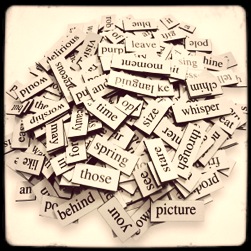The writing you read today won't be the communication you need tomorrow. In a world where content can appear on any surface or no surface at all, providing consumers with real time intuitive assistance to find the right product, improve performance, or manufacture reality will require a different kind of thinking, planning, and promoting. The boundaries and barriers are gone.
Content will need to be versatile, portable, multimodal, and improve the consumer experience. Storytelling alone won't be good enough. Many stories will have to be told by the consumer, drawing upon a non-linear array of data capable of delivering visual, aural, written, kinesthetic content based on the platform they are using and their preference for learning, experiencing, and making purchases.
Logical or emotional, solitary or social, the words we write tomorrow will be blueprints that appreciate no one person is really the same — even if there are a few things that never change.
A sneak peek into the future with a predictive deck.
When I needed a new deck to wrap up my final Writing Across Communication class last spring, I set an objective to help my writing students to appreciate the future as well as a few constants in that have always been part of human communication. It made for a worthwhile exercise in bringing consumer psychology and strategic communication together. They really do belong together.
While many writers spin their wheels trying to find the right way to spin their story, relatively few remember that most communication aims to motivate people. So if you don't know what motivates them, you are only operating with one-half of a two-part equation between the sender and receiver.
Three primary drivers for motivation.
• Intensity of need or desire
• Perceived value of goal or reward
• Expectations of individual or peers
In order to start reconciling these drivers, it's generally a good idea to remember that humans are the only creatures on the planet that form perceptions based on objective and conceptual realities. We're also the only creatures who possess a capacity for cooperation that is both flexible and scalable.
As technology continues to blur the lines between these two realities, people will likely become increasingly responsive to conceptual influences, making the communication of tomorrow especially potent if the message is sent across multiple delivery methods, repeated across a multimodal spectrum, and delivered as non-linear content that allows the user to self-select the experience.
When done right, it will provide even more opportunities to change behavior, change perception, and change attitudes toward just about anything that doesn't oppose individual or cultural core values. Although even those are subject to change when communication is created from precise objectives.
Writing Across Communication will be available again at the University of Nevada, Las Vegas this fall. The class includes eight sessions from Sept. 21 through Nov. 9. I am currently developing an online version of the course for people outside Southern Nevada, independent of the university.
Content will need to be versatile, portable, multimodal, and improve the consumer experience. Storytelling alone won't be good enough. Many stories will have to be told by the consumer, drawing upon a non-linear array of data capable of delivering visual, aural, written, kinesthetic content based on the platform they are using and their preference for learning, experiencing, and making purchases.
Logical or emotional, solitary or social, the words we write tomorrow will be blueprints that appreciate no one person is really the same — even if there are a few things that never change.
A sneak peek into the future with a predictive deck.
When I needed a new deck to wrap up my final Writing Across Communication class last spring, I set an objective to help my writing students to appreciate the future as well as a few constants in that have always been part of human communication. It made for a worthwhile exercise in bringing consumer psychology and strategic communication together. They really do belong together.
While many writers spin their wheels trying to find the right way to spin their story, relatively few remember that most communication aims to motivate people. So if you don't know what motivates them, you are only operating with one-half of a two-part equation between the sender and receiver.
Three primary drivers for motivation.
• Intensity of need or desire
• Perceived value of goal or reward
• Expectations of individual or peers
In order to start reconciling these drivers, it's generally a good idea to remember that humans are the only creatures on the planet that form perceptions based on objective and conceptual realities. We're also the only creatures who possess a capacity for cooperation that is both flexible and scalable.
As technology continues to blur the lines between these two realities, people will likely become increasingly responsive to conceptual influences, making the communication of tomorrow especially potent if the message is sent across multiple delivery methods, repeated across a multimodal spectrum, and delivered as non-linear content that allows the user to self-select the experience.
When done right, it will provide even more opportunities to change behavior, change perception, and change attitudes toward just about anything that doesn't oppose individual or cultural core values. Although even those are subject to change when communication is created from precise objectives.
Writing Across Communication will be available again at the University of Nevada, Las Vegas this fall. The class includes eight sessions from Sept. 21 through Nov. 9. I am currently developing an online version of the course for people outside Southern Nevada, independent of the university.








































